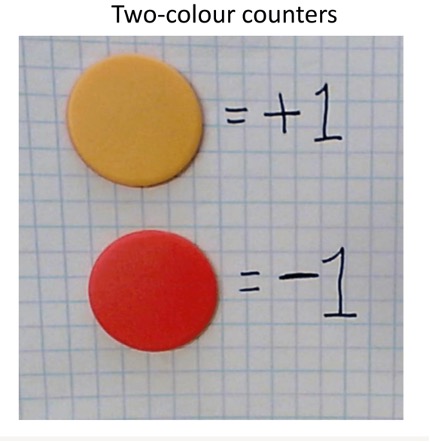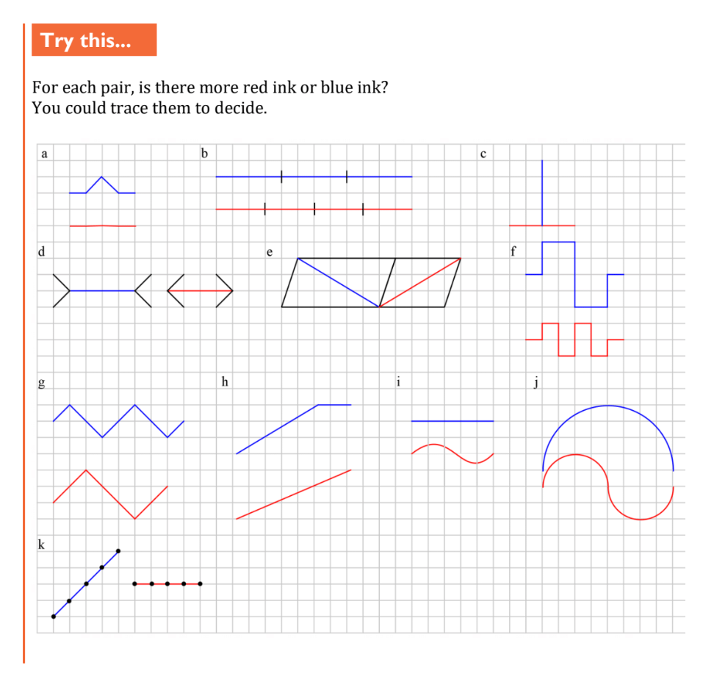Reflections on the Complete Maths Conference
This blogpost was written by Chris Shore, a senior enterprise fellow and PhD student in the Department of Mathematics Education at Loughborough University. Click on the link at the bottom of this blogpost to read more about Chris’s work. Typeset by Dr Beth Woollacott.
In this blogpost, Chris reflects on a mathematics conference that he recently participated in and summarises his thoughts on the five sessions that he attended:
- Introducing the normal distribution.
- The problem with problem-solving.
- Celebrating the negative.
- How coherent is your curriculum (really)?
- Raise the Proof: an exploration of proof and its importance in KS5.
Introduction
The Complete Maths Conference is a conference for mathematics teachers and educators, run by Complete Maths, a company that offers various platforms to support mathematics teaching in school and the home environment (see link to their website at the end of this blogpost). In this blogpost, I reflect on the 35th iteration of the Complete Maths Conference, MathsConf35, held on Saturday 22nd June at Beauchamp College, Oadby, Leicester (a school I used to teach at). The conferences are organised 3 or 4 times a year at various locations around the country and the next conference, MathsConf36, will be in Sheffield on the 12th of October.
If you haven’t been to a MathsConf before then hopefully this blogpost will encourage you to do so. I really would urge you to go: I think it is a great opportunity for teachers and researchers alike to share their thoughts and ideas – you might even consider leading a session! The audience are very welcoming, and I’d be happy to share any tips and pointers if you wanted to. As I straddle both the research and teacher communities, it would be great to see better connections made between the two.
There were so many sessions I wanted to go at MathsConf35, but we could only choose 5 – a very tough choice! In the following, I offer my reflections on the 5 I attended (one of which I was the presenter). The Twitter / X handles for each presenter are given at the bottom of this blogpost for anyone who would like to engage further.
Session 1 – Introducing the normal distribution
Session leader: Catriona Agg
If you do not yet follow Catriona on Twitter / X, you really should. She posts the most amazing geometry puzzles, and reflections on her own secondary teaching – there is always something to think about in her posts. The session started with Catriona sharing a question she asks her A Level pupils: “Which topic is most disconnected from others?” This is an interesting question to consider as a teacher, especially if one has a ‘connectionist’ 1 view of mathematics, and teaching and learning. Catriona’s pupils highlighted the Normal distribution as such a topic and this session outlined the steps she took to build connections across the curriculum.
Catriona’s approach shows how all Normal distribution curves are transformations of each other, and how symmetry can be used to find areas under the curves. Her lessons are structured so that pupils notice these transformations and the changes of scales in the images. By using this knowledge, her pupils use the symmetry of the curves to solve problems, filling in ‘gappy’ 2 notes as they go along, and all this long before a pupil reaches for their calculator. The diagram below is an example of ‘gappy’ notes: a ‘fill in the blanks’ Normal distribution exercise.

I loved this playful approach, which sees the questions as puzzles to be solved, and I appreciated little hints such as always marking one standard deviation from the mean as the non-stationary point of inflexion. I will definitely be taking this approach next time I introduce it to learners.
Session 2 – The problem with problem solving
Session leader: Olivia Iqbal-Mclead
Axiom Maths (linked below) is an organisation which seeks to work with the highest-attaining pupils in mathematics in secondary schools, to address a drop-off in performance that some of these pupils experience. They do this by providing stimulating resources and running problem solving groups for pupils (AKA Maths Circles).
This session was a report of some work Axiom are doing centred around problem solving where they gave 1800 year 7 pupils 15 multiple choice questions and 2 open-ended problems. The answers to these were marked using comparative judgement3. In the session, we were invited to make similar judgements and discuss what features we were looking for in pupil problem solving. This was certainly a challenging task, because it is not easy to decide what problem solving is and how to get our learners better at it! Axiom distilled their findings to come up with some features they expect to see in better problem solving, such as having sound reasoning and proficiently explaining underlying arguments.
I found the discussion around how to teach problem solving really interesting. We know that having domain-specific knowledge is very important and it was good to think about the interaction between this and problem-solving strategies. I want to do a lot more thinking about this in the future! I look forward to seeing where Axiom take this as they develop their ideas.
Session 3 – Celebrating the negative
Session leader: Sharon Malley
This was a fun whistle-stop tour of all things negative (and subtraction, minus, difference, take away etc). We started off thinking around the language we use, especially when reading mathematics aloud, for example in questions such as -3 + -7 and 4(x-2) – 3(x+7). Expressions such as these are not always easy to read and it is no wonder some learners find this difficult, especially when we have multiple words for the same operation.
Next, we discussed the different models of subtraction: take away, part-whole and comparison and looked at how these might best be represented. Sharon gave an example of take-away, “I have 8 cookies and I ate 5, how many cookies do I have left?” Can you come up with an example that fits the other models? We also considered different representations which may be used, such as two-colour counters, exemplified below using a representation for positive and negative numbers.

A fun part of the presentation was when Sharon traced the history of the development of negative numbers and symbols including this doozy of a quotation from Robert Recorde (1551):
“There be other 2 signes in often use of which the first is made thus + and betokeneth more: the other is thus made – and betokeneth lesse.”
A conclusion we drew was that it is no wonder pupils find these concepts difficult given the shear variety of words and ideas contained within subtraction and negative numbers, and how, as educators, we need to carefully sequence the curriculum for learners.
Session 4 – How coherent is your curriculum (really)?
Session leader: me!
This was my first time leading a session at a MathsConf. I was grateful that the Complete Maths team allowed me to showcase some of our work from the Lumen curriculum. You can read Colin Foster’s blog post about it (linked below) which also gives access to the resources and more of our research articles and videos about the curriculum.
We looked at what curriculum coherence looks like and considered some different approaches curriculum designers take. One feature of the Lumen curriculum is that we have chosen to prioritise the number line instead of other representations, and we traced this idea through some of the units. We then spent some time looking at some of the resources and the design choices we made, exemplified in the diagram below.
We would love you to trial our curriculum with your pupils, so please do use it and let us know how you get on.

Period 5 – Raise the Proof: an exploration of proof and its importance in KS5
Session leader: Laura Allport
Laura’s session was really fun and we did lots of proof! More importantly, she helped us think through why pupils often find it a tricky area of their studies, giving reasons including that they often don’t know where to start and that teachers often don’t devote enough time to it.
Laura showed how she uses common misconceptions to unearth problems with proof, and then scaffolds problems, so that her learners grow in confidence in applying the techniques. One cool idea was that she has a ‘proof of the week’ that she uses in her classes and in a maths club – what a lovely idea! She shared some favourite proofs (see below) and ideas of where to find ones to use with pupils.

Final reflections
This was a really fun way to spend a Saturday and was extremely good value. I learned loads and it was a fantastic networking opportunity, to meet old friends and new, and to be part of an inclusive and welcoming community. Literally every session gave me something to think about, and I marvel at the depth of thought that colleagues put into thinking about mathematics education.
Session 1 leader, Catriona Agg:
Session 2 leader, Olivia Iqbal-Mclead:
Session 3 leader, Sharon Malley:
Session 4 leader, Chris Shore (me!):
Session 5 leader, Laura Allport:
References
1 Askew, M., Brown, M., Rhodes, V., Wiliam, D., & Johnson, D. (1997). The contribution of professional development to effectiveness in the teaching of numeracy. Teacher Development, 1(3), 335–356. https://doi.org/10.1080/13664539700200030
2 Alcock, Lara (2018). Tilting the classroom. Loughborough University. Journal contribution. https://hdl.handle.net/2134/28247
3 https://blog.lboro.ac.uk/cmc/2021/06/08/measuring-deep-learning-in-educational-research/
Centre for Mathematical Cognition
We write mostly about mathematics education, numerical cognition and general academic life. Our centre’s research is wide-ranging, so there is something for everyone: teachers, researchers and general interest. This blog is managed by Joanne Eaves and Chris Shore, researchers at the CMC, who edits and typesets all posts. Please email j.eaves@lboro.ac.uk if you have any feedback or if you would like information about being a guest contributor. We hope you enjoy our blog!